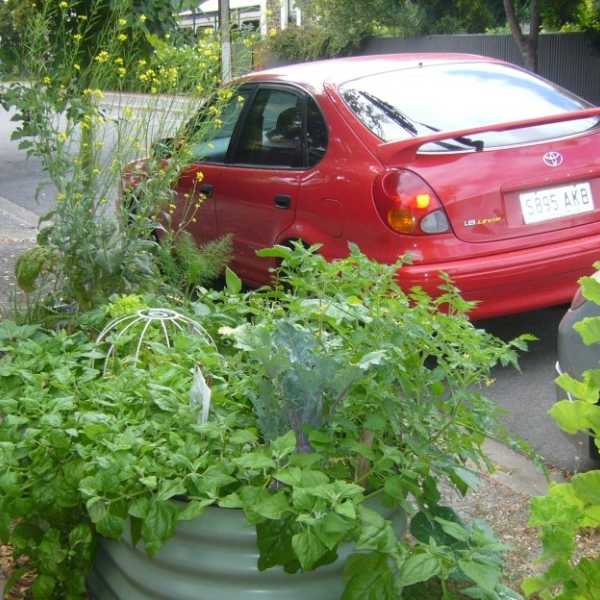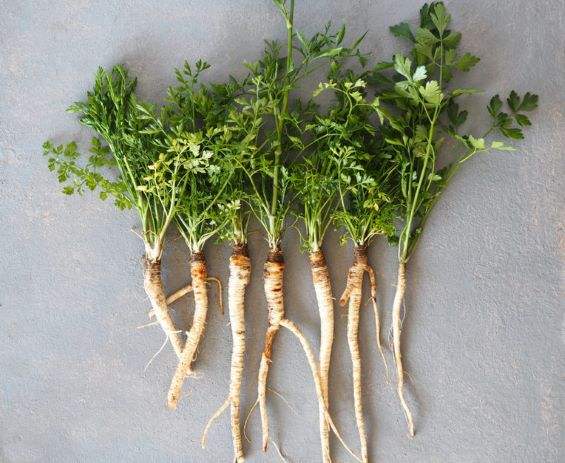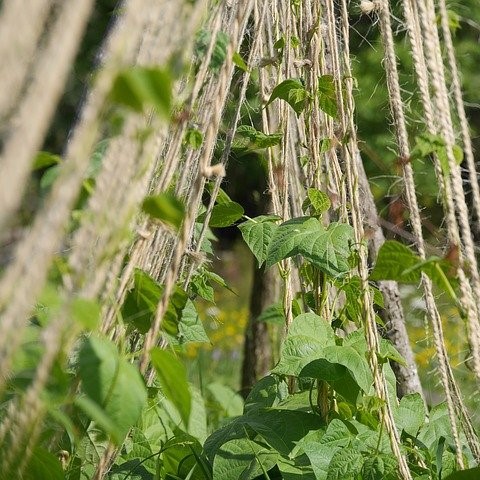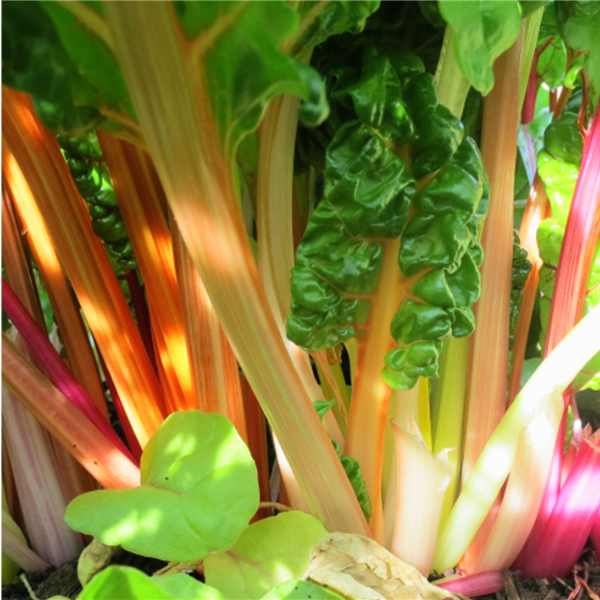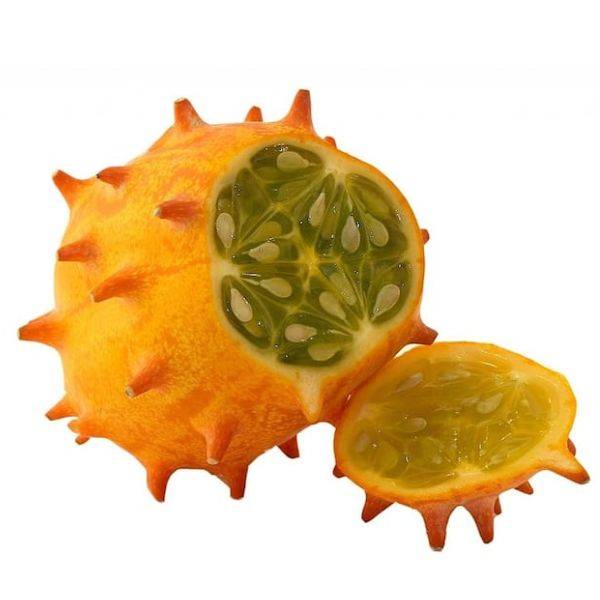Borlotto Lingua di Fuoco
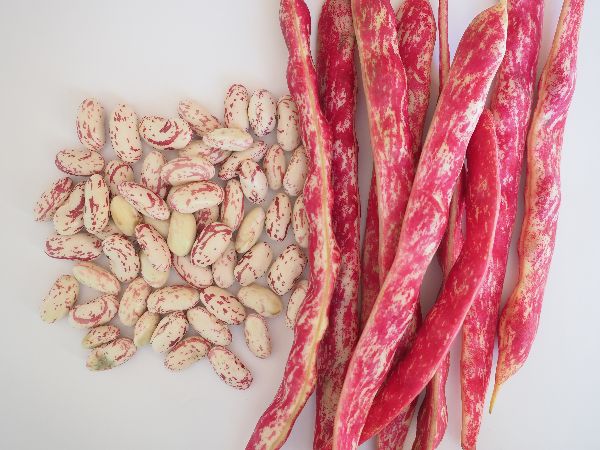
Borlotto Lingua di Fuoco sounds more like an opera with aphrodisiac qualities, rather than one of the eldest heritage varieties of Borlotti bean. Borlotto, whose pink-stippled outer shell’s beauty makes one dream of summer days, sitting on a shaded terrace shelling them for a quick meal, knowing they need nothing more than a quick boil and lick of olive oil. Lingua di Fuoco literally translates as ‘Tongue of Fire’ and for children that hate all green things – these are perfect!
Borlotto Lingua Di Fuoco’ is a mid-early Bean, with a long, inflated pod containing seven cream coloured beans with red ‘splodges’. Loved for their excellent flavour, colour and versatility, Borlotti are the most commonly used heritage bean in Italy for cooking, they are basically the Italian version of kidney beans. This duel purpose variety can be eaten young in the pod either raw or cooked and the beans will last indefinitely once dried.
The ornamental pods look wonderful in the garden, and are stunning chopped into salads. Its gorgeous colour is almost whimsical as you break open the pods to retrieve the plump beans inside. When fully ripe, when you can easily pick out the kernels with your fingers, they are fiery red with a deep yellow base colour. With a creamy taste and a soft nutty consistency, it is quite the most beautiful bean in the world.
Where to grow:
Borlotti beans are grown just like runner beans. They prefer to grow in moist, fertile soil in a sunny, sheltered spot away from strong winds. Prepare the soil for planting by digging over and adding plenty of organic material, this will help to improve the soil’s moisture-retaining ability and fertility. Beans can also be grown in pots. Choose pots at least 45cm in diameter and make sure there are plenty of drainage holes.
Supporting plants:
If you wish to train the plant vertically, create a support before planting. Either make a wigwam with canes, lashed together with string at the top, or create a parallel row of canes, which have their tops tightly secured to a horizontal cane. Add to the ornamental appeal of wigwams by planting a few fragrant sweetpeas alongside them. These will twine together as they climb, attracting pollinating insects to the beans, and providing flowers to pick at the same time as the crop
Sowing: Sow indoors in early spring, outdoors in late spring. Even when temperatures are not below freezing, cold air can damage bean plants, so don’t plant too early. Plant outdoors only after the last frosts. Sow a single bean seed, 2 cm deep, into a 7.5cm pot filled with multipurpose compost. Water well, label and place on a sunny windowsill to germinate. Seedlings will be ready to plant out after about three weeks.
Alternatively, beans can be sown directly in the soil by planting two seeds next to your support about 2cm deep. Water well. After germination remove the smaller and less robust of the two young plants. As they grow, ensure the plants continue to twine around their canes.
Cultivation:
Having shallow roots regular and plentiful watering is vital. Whilst they will prove drought tolerant, beans should be watered particularly heavily, twice a week in dry weather, both when the flower buds appear and once they’re open, ensure maximum pod development. Mulch when conditions are dry. Don’t hoe around bean plants too deeply or you may damage the roots.
Beans capture nitrogen from the air, so make sure the soil contains the other essential ingredients, phosphorus and potassium. So for the fertiliser use something like 10-20-10. They leave the soil nitrogen-enriched even after harvest
Harvesting: 70 days
Ready for harvesting as green pods after 70 days, or shelling semi-dry after 80 days. The more you pick, the more they produce. Most should bear pods from early summer and cropping of all types can continue until the first frosts, or longer if plants are protected.
Leave the pods on the plant until the shells have changed colour from green to a fully white and red colour. Check that beans inside have turned from green to similar colour to shells. Harvest and shell the beans
Storing:
The beans will store best if you remove the pods, spread them on trays and place them in a warm dry room for a few days to dry out completely before storing them in clean jars in a cool dry place. Discard any that are discoloured or damaged. The beans will then keep for a few years. Check them over periodically to make sure no insects have got in as you would with any store cupboard food.
To cook the dried beans, they will need soaking first, they are best left overnight in a big bowl of water. While the soaking is not strictly necessary, it shortens cooking time and results in more evenly textured beans.
Before using in a recipe, boil the soaked beans for at least 45 minutes, or boil for ten minutes, tip off the water and add fresh water, then bring to the boil again and boil for at least another 30 to 45 minutes. Don’t add salt to these first boiling’s as it can make the beans rather hard.

